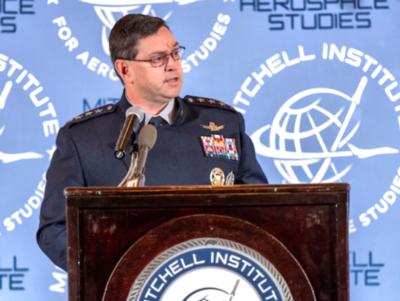Tue, Apr 09, 2024
United States Space Force (USSF) has laid out its blueprint for maintaining U.S. dominance in space
In an era where the final frontier is no longer just a vast expanse for exploration but a domain of strategic competition, the United States Space Force (USSF) has laid out its blueprint for maintaining U.S. dominance in space. On March 31, 2024, Gen. Chance Saltzman, the Chief of Space Operations for the USSF, unveiled this strategy amidst the backdrop of growing rivalry and the cluttering of space with hazards.

Saltzman's remarks at the Spacepower Security Forum, hosted by the Mitchell Institute for Aerospace Studies, came at a critical juncture. The U.S. faces an "incredibly sophisticated array" of threats ranging from space-based GPS jammers and anti-satellite weapons (ASATs) to cyberattacks targeting ground stations and space assets. This increasing militarization of space by nations like Russia and China, particularly their use of space-based intelligence, surveillance, and reconnaissance (ISR) capabilities, underscores the pressing need for the U.S. to secure its space operations.
The establishment of the Space Force, as Saltzman articulated, is a direct response to these challenges, aiming to protect U.S. interests and ensure operational freedom in space. Echoing the commitment of terrestrial branches of the military to dominate their respective domains, Saltzman emphasized that space superiority is foundational to the Space Force's mission. This entails not just protecting U.S. space capabilities but also being prepared to deny adversaries the use of theirs when necessary.

Saltzman's strategy for achieving space superiority rests on a disciplined approach to ensure that space remains a secure, safe, and stable environment for future generations. Central to this vision is the concept of "competitive endurance," which involves three main tenets: avoiding operational surprises, negating adversaries' space capabilities, and engaging in responsible counterspace operations.
These principles are designed to ensure the U.S. and its allies retain unfettered access to and use of space, thereby maintaining a strategic advantage. Saltzman's message was clear: the imperative of space superiority not only secures the U.S.'s interests but also upholds the safety, security, and sustainability of space for all. In the face of escalating threats, the USSF's commitment to a measured and strategic approach to space operations is crucial for maintaining global stability and peace.
More News
Decision Altitude (DA) A specified altitude (mean sea level (MSL)) on an instrument approach procedure (ILS, GLS, vertically guided RNAV) at which the pilot must decide whether to >[...]
Aero Linx: T-34 Association, Inc. The T-34 Association was formed in July 1975 so that individuals purchasing then military surplus T-34As had an organization which would provide s>[...]
As He Released The Brakes To Begin Taxiing, The Brake Pedals Went To The Floor With No Braking Action Analysis: The pilot reported that during engine start up, he applied the brake>[...]
“Legislation like the Mental Health in Aviation Act is still imperative to hold the FAA accountable for the changes they clearly acknowledge need to be made... We cannot wait>[...]
Also: IAE Acquires Diamond Trainers, Army Drones, FedEx Pilots Warning, DA62 MPP To Dresden Tech Uni The danger to the flight training industry and our future pilots is clear. Dona>[...]
 ANN's Daily Aero-Term (12.08.25): Decision Altitude (DA)
ANN's Daily Aero-Term (12.08.25): Decision Altitude (DA) ANN's Daily Aero-Linx (12.08.25)
ANN's Daily Aero-Linx (12.08.25) NTSB Final Report: Piper PA-31T3
NTSB Final Report: Piper PA-31T3 Aero-News: Quote of the Day (12.08.25)
Aero-News: Quote of the Day (12.08.25) Airborne-Flight Training 12.04.25: Ldg Fee Danger, Av Mental Health, PC-7 MKX
Airborne-Flight Training 12.04.25: Ldg Fee Danger, Av Mental Health, PC-7 MKX



